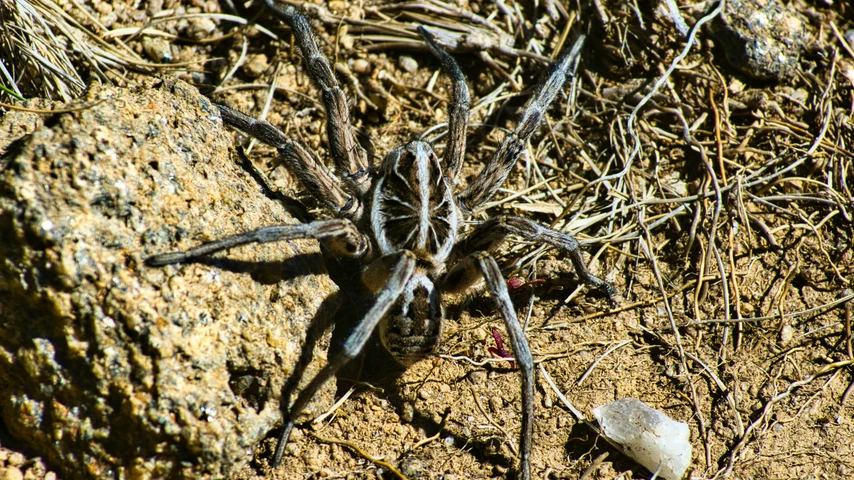Australian Wolf Spiders: The Stealthy Hunters Lurking in Your Backyard


The Australian wolf spider gets its name from its distinct hunting skills.
They use their agility and excellent eyesight to stalk their prey, much like a wolf.
As Australian wolf spiders have been known to venture indoors, it is important to be familiar with their characteristics and bite, both of which we will cover in this article.
We also look at spider bites in our general and childcare first aid courses and have training locations throughout every state, capital city, and major town in Australia.
Head to our Locations page to enrol in a first aid course near you.
According to Live Science, there are nearly 2,400 species of Wolf spiders distributed across the globe in a wide range of coastal and inland habitats, including shrublands, rainforests, and open woodlands.
The most common Wolf spider in Australia, the Garden wolf spider (Tasmanicosa godeffroyi) prefers suburban backyards.
Wolf spiders feed primarily on ground-dwelling invertebrates like crickets, ants, and other spiders, though larger specimens have also been known to feed on a selection of small vertebrates like frogs, toads, and lizards.
In fact, they are known predators of the Cane toad.
Australian wolf spiders have the following characteristics:
They also have three rows of eyes - two medium sized eyes in the top row, two large eyes in the middle row, and four smaller eyes in the bottom row - and so can hunt nocturnally without using webs or vibrations.
Australian wolf spiders are widely distributed across the country.
They are commonly found in suburban backyards, where they shelter in leaf litter or burrows that may or may not have a trapdoor made from pebbles, twigs, and other materials.
Female Wolf spiders carry their egg sac on their abdomen until the eggs hatch. As such, they have been known to enter homes to protect their egg sacs and hatchlings from cold conditions.

Australian wolf spiders are not considered dangerous to humans.
Wolf spiders prefer to run away from trouble and will only bite when threatened.
As such, if you inadvertently dig one up while tending to your garden, allow it to scurry away to a new hiding place.
Australian wolf spider bites generally only cause mild symptoms like localised pain or itchiness.
Less common and more severe symptoms can include prolonged pain and swelling at the bite site, as well as nausea, dizziness, and a rapid pulse.
In any case, you should treat Wolf spider bites using the following first aid procedure:
If the pain persists or you are worried about your symptoms, seek medical attention.
Likewise, If the casualty begins exhibiting signs of anaphylaxis, call Triple Zero (000) for an ambulance, consult the Australian Resuscitation Council's anaphylaxis treatment guideline, follow DRSABCD and prepare to perform CPR.
If you would like to learn more about providing spider bite first aid, enrol in one of our general or childcare first aid courses.
We have training locations in every state, capital city, and major town throughout Australia.
Head to our website to enrol at a training Location near you.

March 11, 2025
Darwin, the tropical capital of Australia’s Northern Territory, is home to a rich diversity of wildlife - including an impressive array of spiders. From the sprawling webs of golden orb-weavers to the cryptic camouflage of trapdoor spiders, these arachnids play a vital role in the local ecosystem. While some may inspire fear, the majority are harmless and even beneficial, helping to control insect populations.

September 4, 2024
Cat bites, while often underestimated, can lead to serious health complications if not treated promptly and properly. Cats' mouths harbour a variety of bacteria that can cause infections in humans.

April 1, 2024
Encounters with wildlife can often be thrilling, but when it comes to the creature known as the drop bear, the experience can quickly turn dangerous. A sharp increase in recent attacks prompts the need for understanding proper first aid procedures in case of an attack.